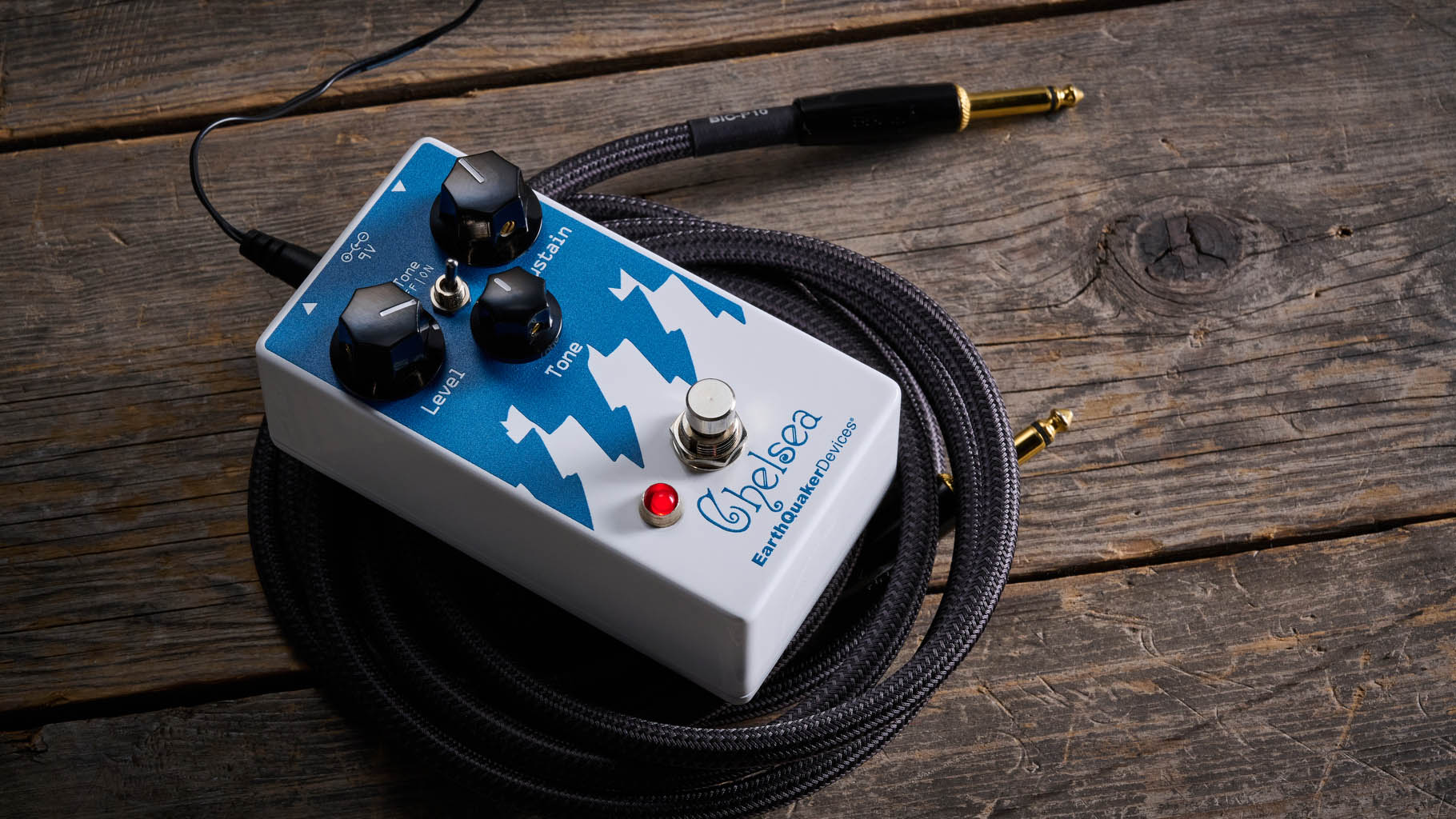
What is it?
The EQD Chelsea is a new bass distortion from EarthQuaker Devices. It's a faithful recreation of a Big Muff James Murphy of LCD Soundsystem bought at Chelsea Street Guitars – hence the name.
Extensively used in the studio and on tour, the vintage unit was becoming unreliable, and Murphy turned to EQD founder Jamie Stillman to help.
The result is this signature pedal.
Specs
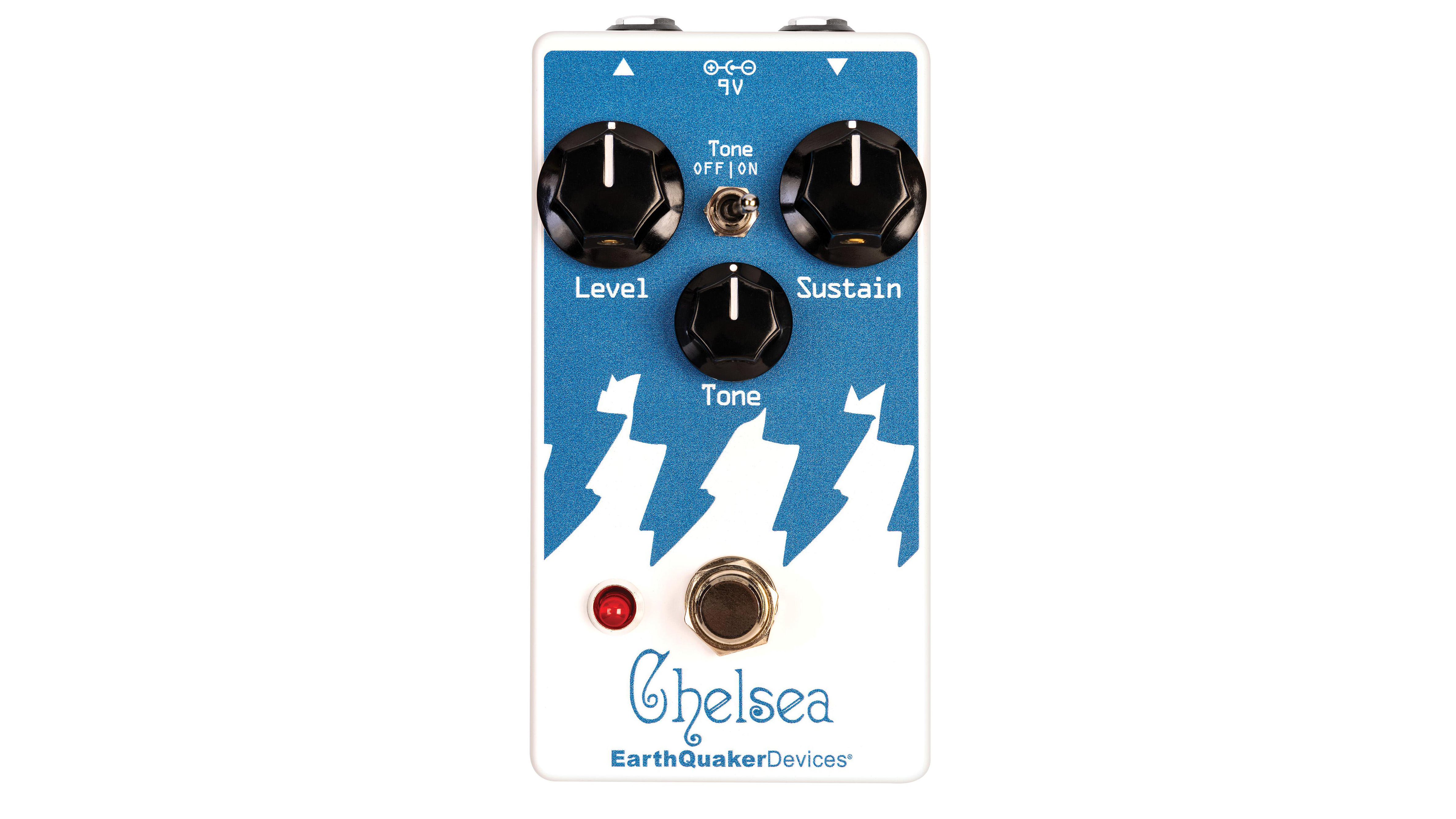
- PRICE: $179/£189.99/€219
- TYPE: Bass Fuzz Pedal
- MADE: USA
- CONTROLS: Level, Tone, Sustain, Tone Bypass
- CONNECTIVITY: Input, Output, Power
- BYPASS: Relay True Bypass
- POWER: 9v DC Centre-negative
- DIMENSIONS: 121 x 64 x 57 mm
- WEIGHT: 0.74lbs/ 0.33kg
- CONTACT: EarthQuaker Devices
Build quality
Build quality rating: ★★★★★
As you'd expect for an Earthquaker Devices pedal, it's solidly put together and the triangle controls are what you'd expect.
For some years EQD have eschewed the big punchy 3PDT true bypass switches commonly found in boutique pedals for a relay bypass switching system; whether you prefer that is a matter of taste.
Usability
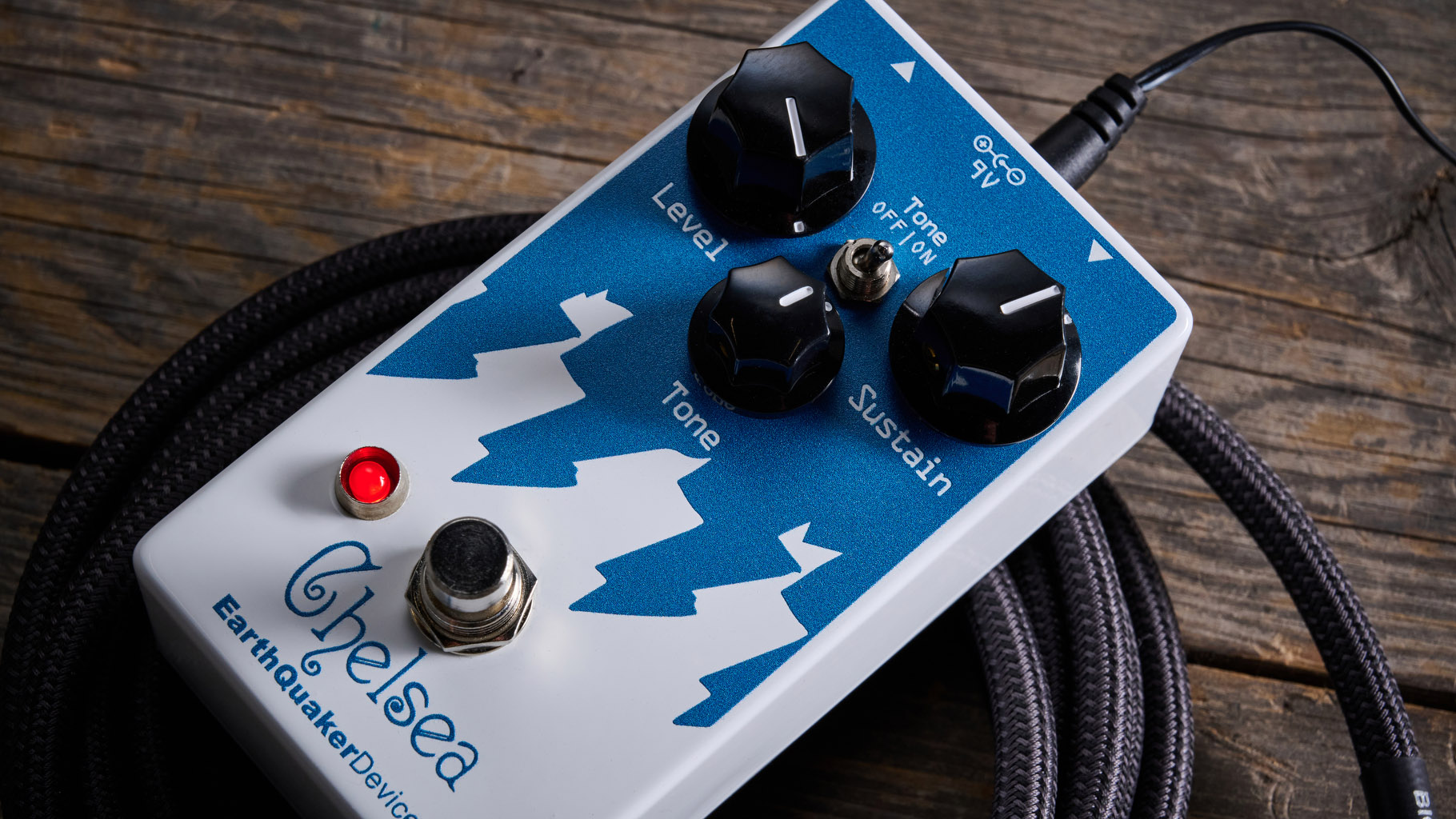
Usability rating: ★★★★★
Chelsea has more subtlety than many Muffs, so you will find more than one usable setting text here
Big Muffs are simple in the extreme. Plug in, turn the sustain up to full, turn the tone to (usually) the one 'good' spot for your guitar, pickups and amp, set the level and go.
However, the Chelsea has more subtlety than many Muffs, so you will find more than one usable setting. Still, despite the range of gain on offer, apparently the two most used settings on the original LCD Soundsystem unit were sustain all the way down, and sustain all the way up. Go figure.
Sounds
Sounds rating: ★★★★☆
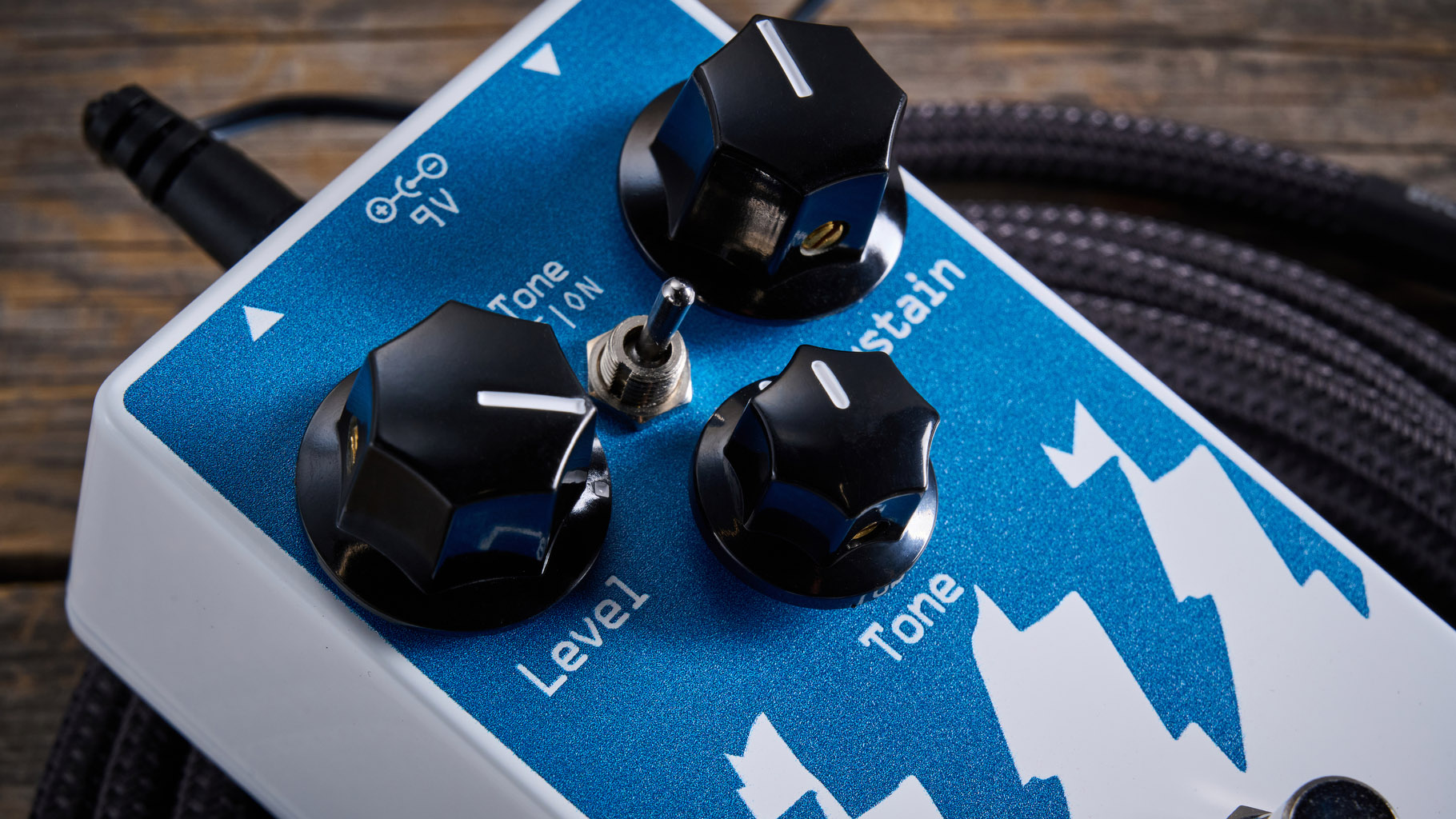
The pedal Jamie Stillman received from Murphy was a version 6 Big Muff, produced from roughly 1979 to 1984. It's a part-changed version of the rare transistor Big Muff version 3, the Muff that introduced a tone bypass prior to the version 4 and 5 op-amp Muffs.
As any vintage Big Muff owner can tell you, no two sound alike, especially after years or even decades. Even if parts haven't been replaced and repaired over the years, variance in manufacture, tolerances and the condition, storage and use of the pedal gradually add up to a unique voice.
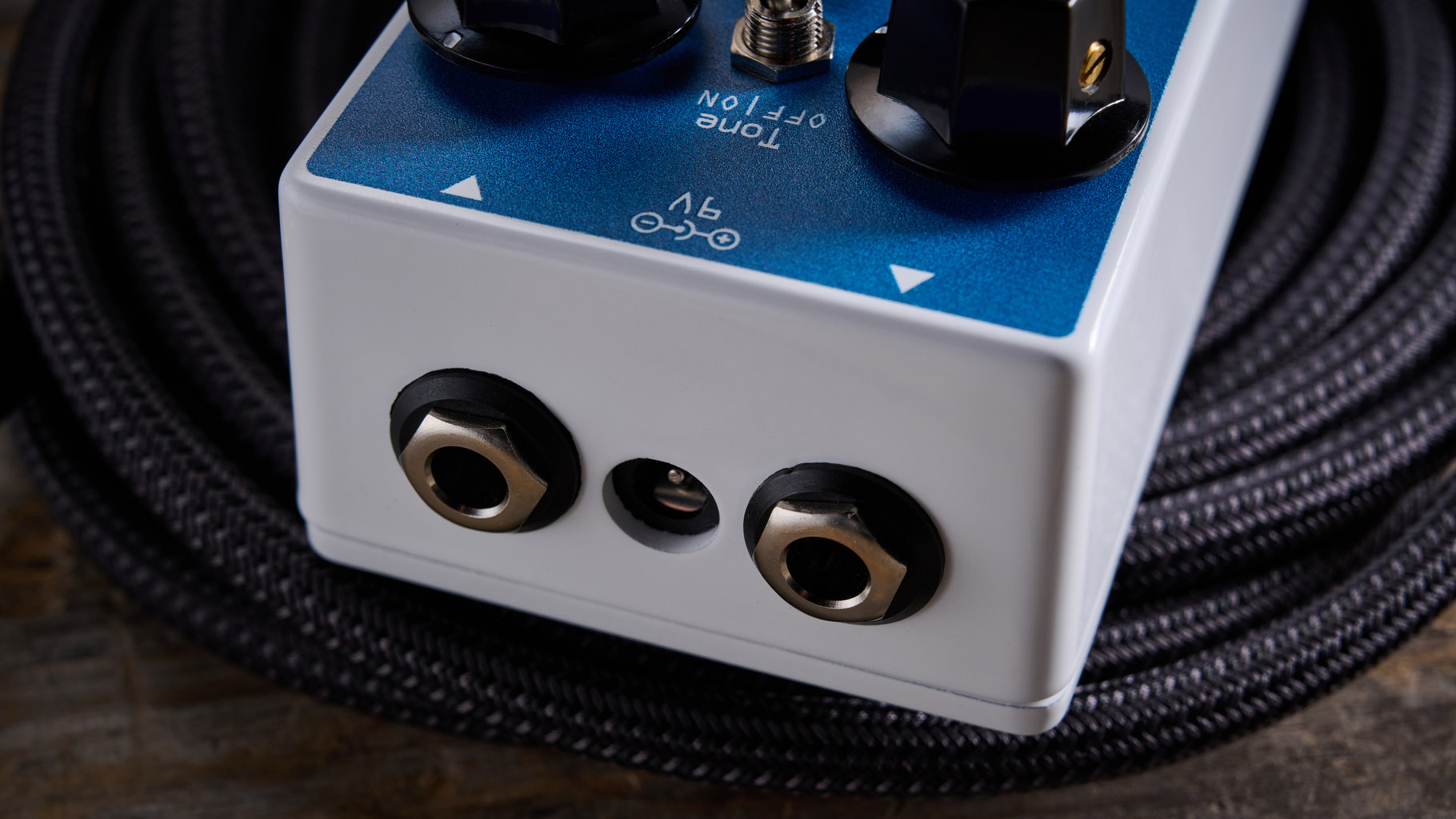
In the case of the Chelsea, the voicing difference is in one of the more unusual areas - gain. Muffs are usually 'all or nothing', but the Chelsea is a different beast. It cleans up surprisingly well with the guitar volume knob, has a decent range of gain, and sounds 'grinding' rather than fuzzy on bass.
Perhaps this is as the result of a part change, with the output pot reportedly being switched to 10k rather than the 100k of the v3 or 150k of the v6. Maybe it's the attritional result of heavy touring - we will never know. Whatever the reason, it has a unique tone.
On guitar, fully open, the pedal is more Muff-like on a neck pickup, and more distortion-like on the bridge
The ability to bypass the tone stack adds another layer of versatility to an already interesting stompbox. The Chelsea is biting in the upper mids at most settings of the tone stack at or above 12 o'clock, and this results in much more of an overdrive or distortion tone than a fuzz tone. On guitar, fully open, the pedal is more Muff-like on a neck pickup, and more distortion-like on the bridge.
On bass, depending on the pickups and model it creates an especially gritty tone that can be dialled in to taste. At lower gain settings it is excellent for adding just a bit of crunch. Although the pedal is decent on guitar, I had by far the most fun when we used it on a bass with Jazz Bass pickups into a Marshall guitar stack, Lemmy style.
By maxing the bass at the amp, there was just enough low-end, while the guitar amp had plenty to chew on with the extra mids kicked out by the Chelsea.
Verdict

Whether on guitar or bass, the Chelsea is a uniquely-voiced Big Muff-style pedal
Whether on guitar or bass, the Chelsea is a uniquely voiced Big Muff-style pedal. However, Muff aficionados might not find it quite unique enough, while the large Big Muff DIY community – from which, historically, Jamie Stillman hails – doesn't need to buy one.
Whether or not the remaining market, LCD Soundsystem fans, is big enough to make this a hit remains to be seen, but its strengths are undeniable.
Guitar World verdict: While it's a versatile pedal, the Chelsea particularly shines on bass, which makes sense, as that's how it's used in LCD Soundsystem. Still, on guitar it's no slacker, and if you want a uniquely-voiced version 6 Big Muff then look no further.
Test |
Results |
Score |
|---|---|---|
Build quality |
EQD does not mess around. Flawless. |
★★★★★ |
Usability |
Big Muff variants are simple beasts and this is no different but being able to bypass the tone stack makes it even easier to dial in. |
★★★★★ |
Sounds |
A unique take on a special Big Muff, it sounds great with a guitar but even better with bass. |
★★★★☆ |
Overall |
Is it weird enough for the hardcore Muff fans in search of something different? Maybe. Is it cool? Definitely. |
★★★★½ |







